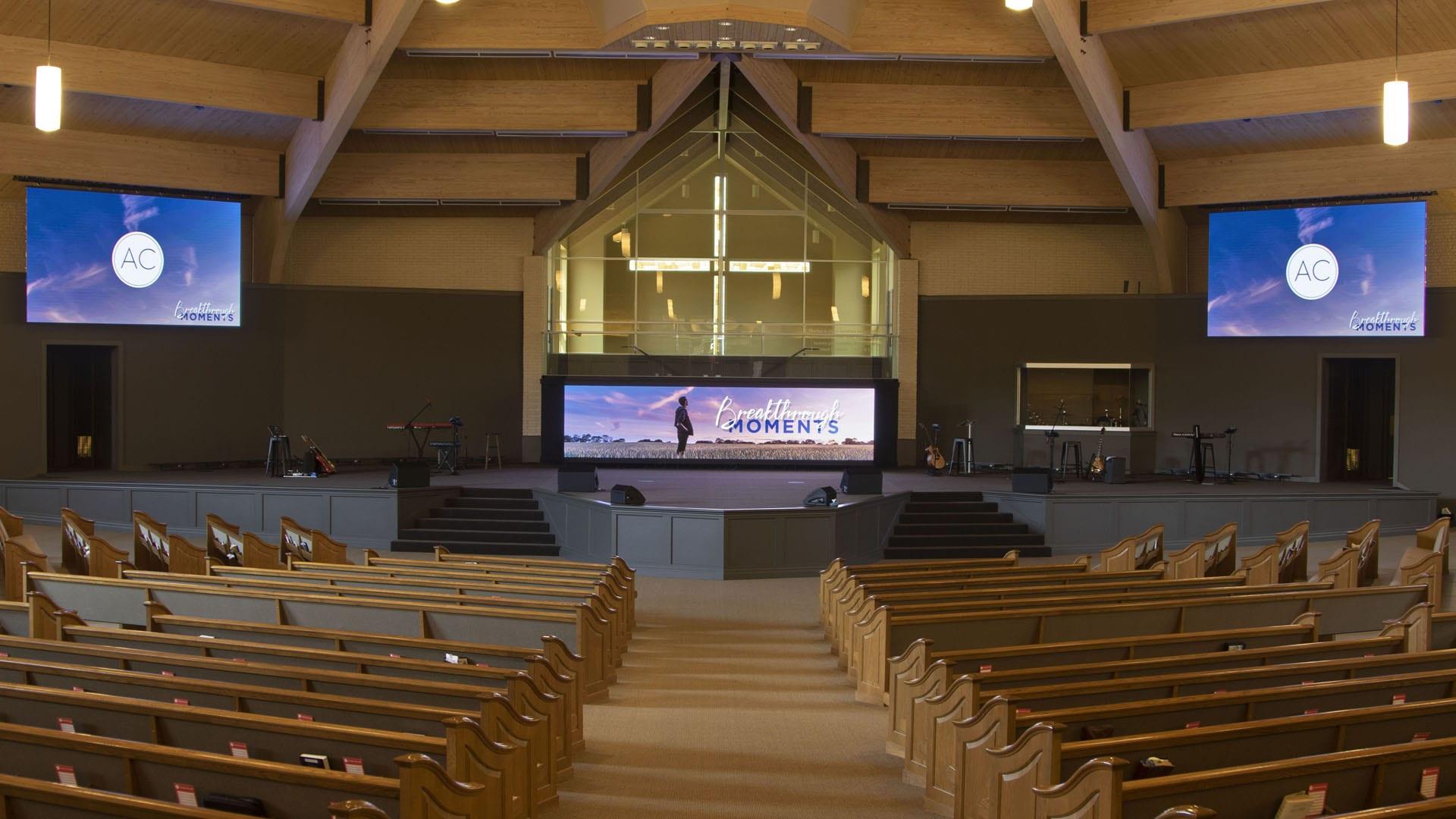Practical Considerations for Installing LED Walls in Churches: What You Need to Know
LED walls have become increasingly popular in churches as versatile tools for enhancing worship experiences, engaging congregations, and communicating messages effectively. However, installing LED walls in church settings requires careful planning and consideration to ensure optimal performance and integration with existing infrastructure. In this blog post, we’ll explore practical considerations for installing LED walls in churches, covering key factors such as size, resolution, viewing angles, installation logistics, and budgeting.
Size and Resolution:
One of the first considerations for LED walls for a church is determining the appropriate size and resolution. Consider factors such as the viewing distance from the congregation to the screen and the intended use of the LED wall. For example, larger screens with higher resolutions may be necessary for displaying detailed graphics, lyrics, or scripture passages, while smaller screens may suffice for simpler applications. Work closely with an experienced AV consultant or integrator to determine the optimal size and resolution for your church’s needs.
Viewing Angles and Seating Arrangements:
Another important consideration is the viewing angles of the LED wall and the seating arrangement in the church sanctuary. Ensure that the LED wall is positioned at an optimal height and angle to provide clear visibility to all members of the congregation, regardless of their seating location. Consider factors such as the angle of the pews or seating rows, potential obstructions, and the distance between the LED wall and the farthest seating areas to maximize visibility and engagement.
LED Wall Integration:
Consider how the LED wall will integrate with existing audiovisual systems in the church. Ensure compatibility with your church’s audiovisual equipment, such as sound systems, cameras, and media players. Work with an experienced AV integrator to ensure seamless integration and compatibility with existing infrastructure, maximizing the functionality and effectiveness of your church LED Displays.
Installation Logistics:
Installing an LED wall in a church requires careful planning and coordination to ensure a smooth and successful installation process. Consider logistical factors such as access to the installation site, power requirements, mounting options, and structural considerations. Work with experienced contractors and installers who specialize in LED wall installations to ensure that the installation is done safely, efficiently, and according to industry best practices.
Budgeting and Cost Considerations:
Finally, consider the budgetary implications of installing an LED wall in your church. LED walls can vary widely in cost depending on factors such as size, resolution, and installation complexity. Factors include not only the upfront costs of purchasing and installing the LED wall but also ongoing maintenance and operating expenses, such as power consumption, and potential repairs or upgrades in the future. Consider options for financing or fundraising to offset the upfront costs and ensure that the LED wall project aligns with your church’s budgetary priorities.
Final Thoughts
Installing an LED wall in a church can significantly enhance worship experiences, engage congregations, and communicate messages effectively. However, careful planning and consideration of factors such as size, resolution, viewing angles, installation logistics, and budgeting are essential to ensure a successful installation process and optimal performance. By working closely with experienced AV consultants, integrators, and contractors, churches can leverage the power of LED walls to create impactful visual experiences that inspire and connect with their communities.



